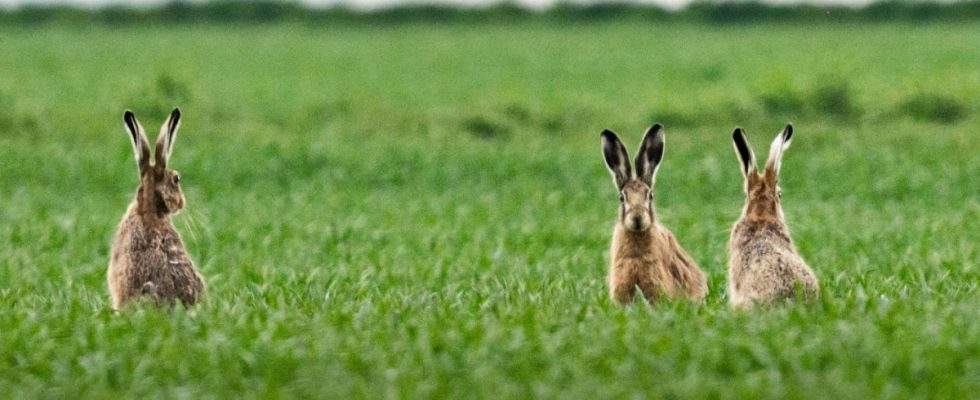There are more brown hares again in Germany. There are currently no separate figures for the Free State, but Sebastian Ziegler, Vice President of the Bavarian Hunting Association (BJV), assumes a stable population. This is the result of the brown hare monitoring by hunters that is currently underway in Bavaria.
However, 2024 is unlikely to be a record year, Ziegler estimated. It would be important for the brown hare now that the spring is not too wet. Nationwide, there were an average of 19 brown hares per square kilometer in fields, meadows and fields in spring 2023.
“This is an all-time high,” said spokesman for the German Hunting Association (DJV), Torsten Reinwald. It is the highest value since nationwide monitoring began in 2001. In 2022, an average of 16 animals per square kilometer were counted across Germany. The dry spring of 2023 in particular provided optimal starting conditions for the offspring of rabbits, says Reinwald.
The endangered brown hares are widespread almost everywhere in Germany. Brown hares have a large number of offspring because the mortality rate is high, says Ziegler from the BJV. On average, a female rabbit has eleven young per year, one or two of which survive. This worked well in Germany until the population declined sharply at the end of the 20th century and the beginning of the 2000s.
One of the reasons is the loss of habitat and therefore food. Intensive agriculture makes the habitat for the brown hare less varied. But the animals need nutritious food such as dandelions, clover or wild herbs, said Ziegler. This way they could gain fat and female rabbits could produce full-fledged milk for their offspring. Fat reserves could help the rabbits meet their moisture needs even in particularly dry summers.
Hedges, flowering meadows or ditches also offer protection from predators. Here hunters could help the brown hare by hunting red foxes, raccoons and stone martens. Ziegler regrets that the EU recently suspended guidelines according to which four percent of agricultural land should have been designated as fallow land. These areas would have benefited the brown hare, but also other animal species. Now the BJV vice-president said it was voluntary. Farmers need more financial incentives for nature conservation measures.

